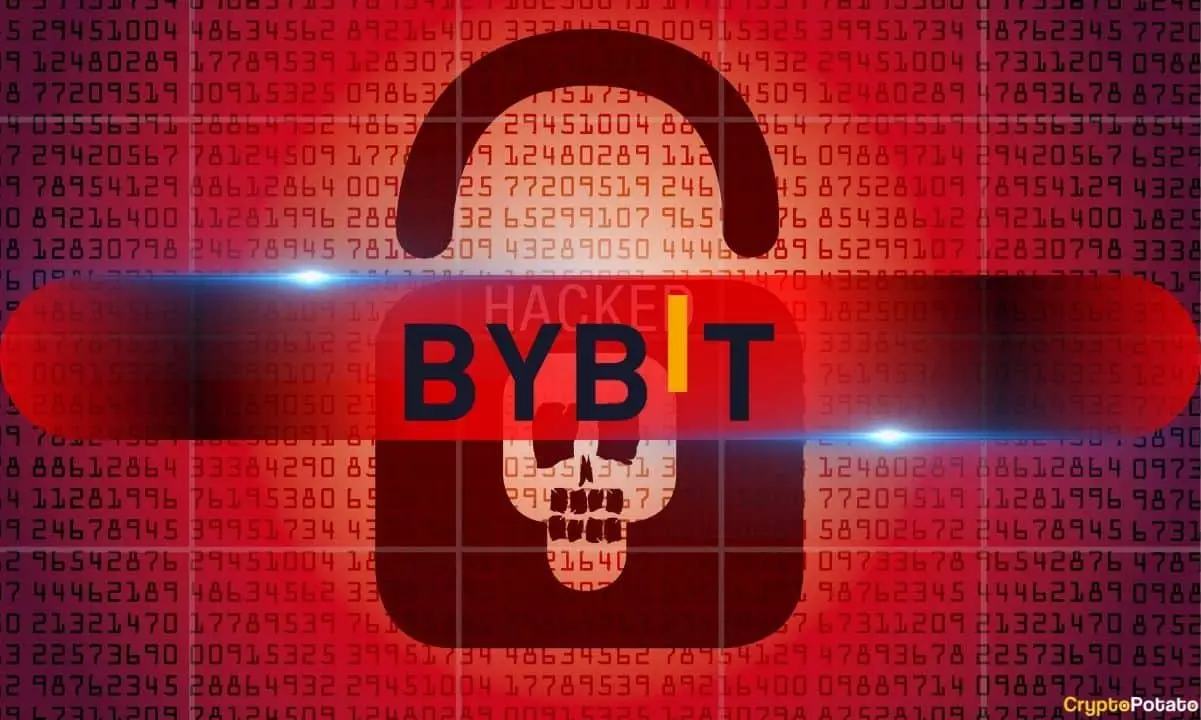In the fiercely competitive world of cryptocurrencies, security breaches can spell disaster not just for the companies involved, but also for the entire ecosystem. The recent $1.5 billion heist involving the crypto exchange Bybit serves as a stark reminder of the vulnerabilities that still plague the digital currency landscape. This wasn’t merely a loss of assets; it was an event that unsettled the very foundations of investor confidence in a market already beset by tumultuous conditions.
What makes this incident particularly eye-catching is that the hack targeted one of Bybit’s Ethereum cold wallets, raising questions about not only the exchange’s security measures but also the broader implications for the crypto market. The attack occurred during a time when market volatility was already heightened by macroeconomic factors, such as escalating tariff tensions and the unveiling of advanced AI models like DeepSeek. The timing couldn’t have been worse, and the consequences rippled far beyond Bybit.
The Market’s Reaction: Panic or Pragmatism?
In the immediate aftermath, the crypto market reacted predictably—panic ensued. Trading volumes surged in the hours following the breach as investors scrambled to assess and mitigate their exposure. Analysts took note of a noteworthy spike in the hourly volume for all Tether (USDT) pairs, indicating that traders were attempting to reposition themselves amid the chaos. However, the aftermath was not just short-lived; it exposed cracks in the market’s foundation that can no longer be ignored.
Bybit’s share of the spot trading volume plummeted dramatically, from 11% to a mere 4%. Even more troubling was the rapid decline in Bitcoin’s trades, which fell from 50% to below 20%. While Ethereum trading volumes remained relatively stable compared to Bitcoin, it was clear that investor confidence was wavering. The decline in trading activity post-incident signifies a deeper malaise in market sentiment, demonstrating a critical vulnerability within the crypto space.
The Importance of Bid-Ask Spreads
Despite the panic, one silver lining emerged: bid-ask spreads remained surprisingly tight. This observation is pivotal, as tighter spreads usually indicate higher liquidity and reduced execution risk for traders. Interestingly, after the breach, only certain minor assets, like Pepe (PEPE) and Official Trump (TRUMP), saw significant shifts in order book depth, while major cryptocurrencies like Bitcoin and Ethereum largely retained their pre-attack metrics.
This resilience in bid-ask spreads reflects the underlying strength of these assets’ liquidity pools. Even when faced with uncertainty, the market displayed an ability to keep execution risks low for traders. This nuanced perspective is essential for those who wish to navigate the unpredictable waters of cryptocurrency trading.
Retail Price Improvement Orders: A Game-Changer?
At the forefront of Bybit’s recovery strategy was the introduction of Retail Price Improvement (RPI) orders, designed specifically to enhance liquidity for retail traders. Remarkably, these orders were launched just days before the hack occurred. The pertinent question is, did these RPI orders serve as a lifeline?
Bybit’s initiative to cater primarily to retail investors through the RPI orders provided a unique cushion against the unfolding crisis. As the market began to stabilize post-breach, the RPI feature fostered better access to liquidity, which led to tighter bid-ask spreads for retail traders. This targeted approach to improving market conditions highlights an innovative strategy—a differentiation factor in a landscape often criticized for lack of support for individual investors.
Ultimately, Bybit’s experience exemplifies the complex interplay between security measures, investor sentiment, and innovative trading solutions. While the hack was a calamitous event, the subsequent recovery strategies unveil important lessons about resilience, liquidity, and the vital role of understanding market dynamics.
A Cautionary Tale for the Future
The Bybit incident serves as a sobering reminder of the ever-present risks in the crypto market. While highlights such as RPI orders showcase the potential for innovative strategies to mitigate crises, it’s crucial for exchange operators to prioritize security above all. Moving forward, one must navigate the crypto waters with both caution and pragmatism, recognizing that innovation alone cannot shield against the persistent threat of cybercrime.
With increasing regulations and rising threats, this fight for survival will require a fusion of security and savvy market strategies that empower both investors and exchanges alike. This incident is not simply a glitch in the matrix—it’s a wake-up call for all involved to ground their ventures in fortified security measures, lest the world of digital currency succumbs to further catastrophes.

